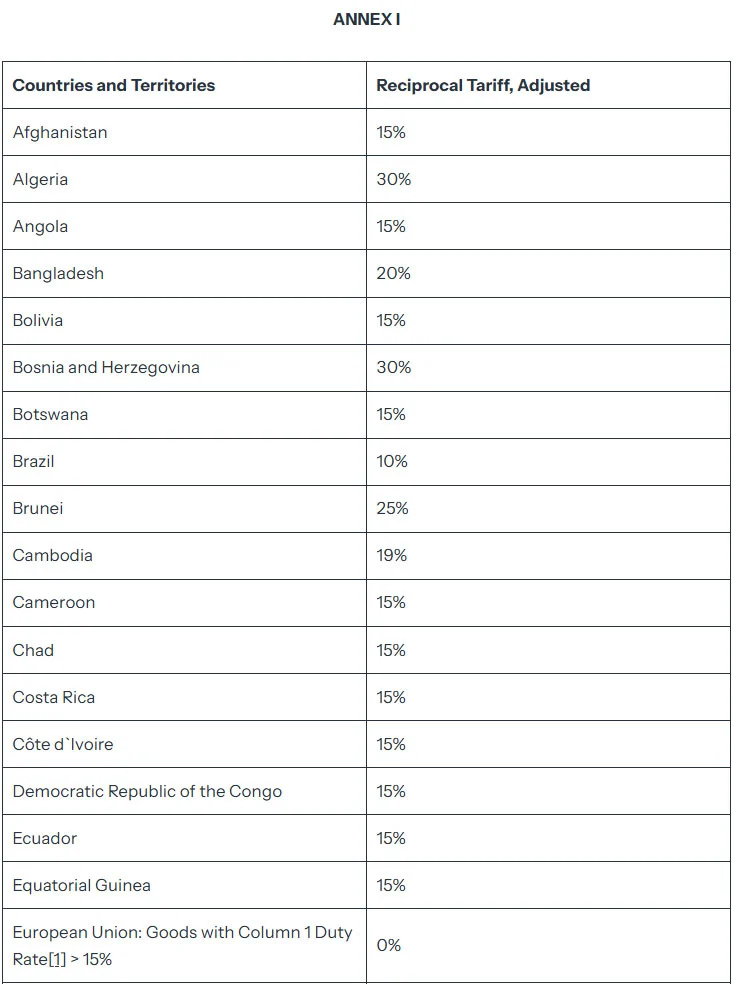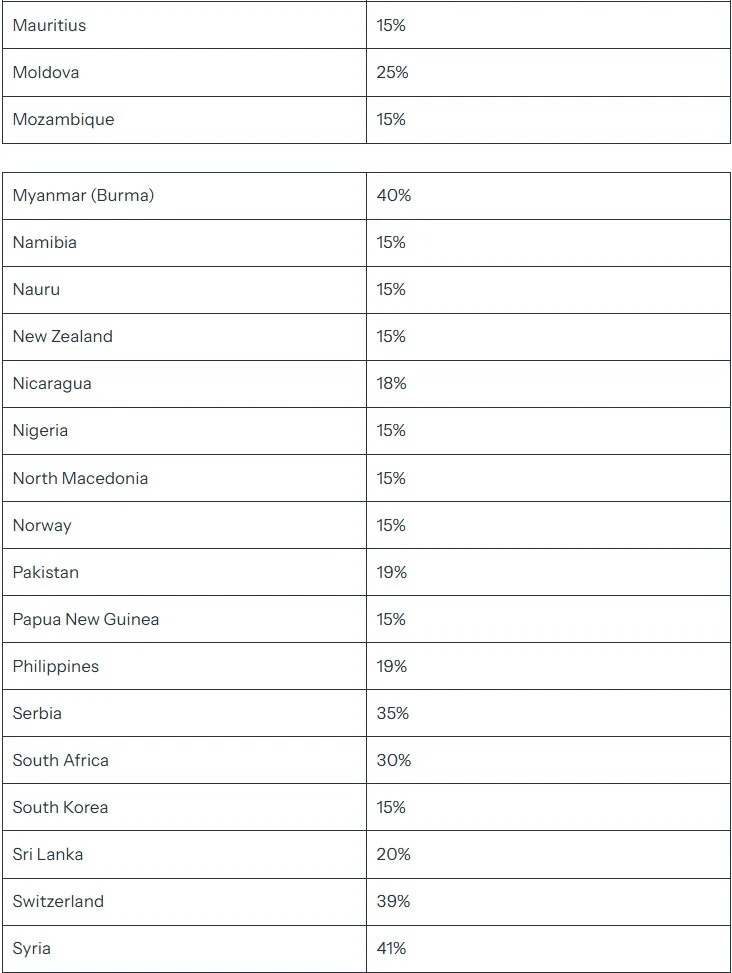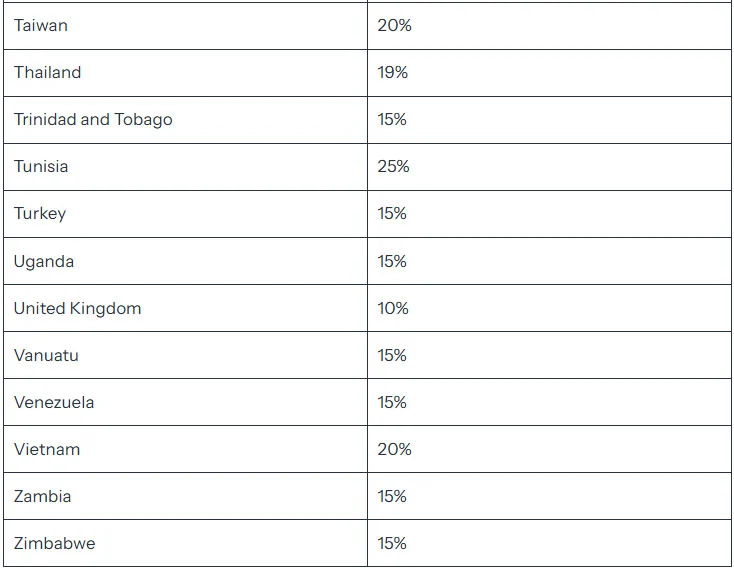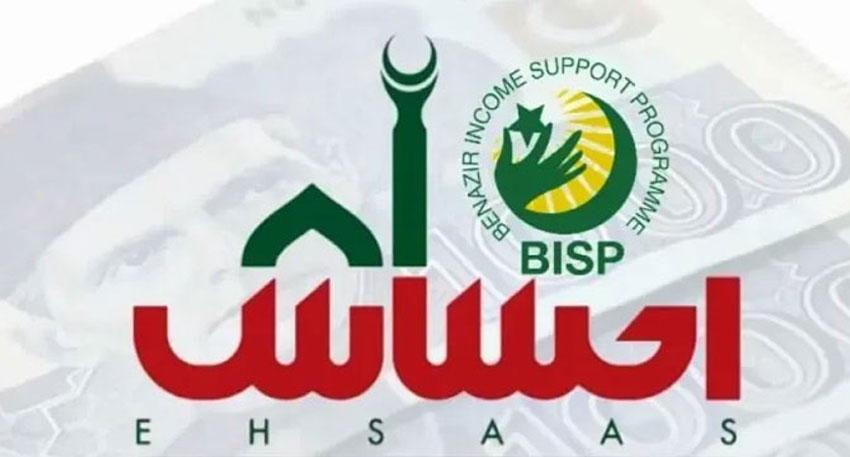
The measures take effect August 7, 2025, and to protect national interests and demand more equitable terms, US trade policy has been reconfigured.
A baseline of 10% tariff has been introduced by the executive order; this will be on goods from all non-exempt countries, with tariffs ranging up to 41% on additional country-specific duties depending on trade practices.
Pakistan joins a long list of affected nations, including India (25%), Taiwan (20%), Iraq (35%), and Syria (41%).
Also Read: PM Shehbaz thanks President Trump for historic trade deal
Canada faces targeted hikes, such as a 35% tariff on fentanyl-related imports, while Mexico received a 90-day reprieve on some 30% tariffs to continue trade talks.
Trump’s executive order, issued on August 1, 2025, sets the new tariff rates effective August 7. The delay allows importers and customs authorities to adjust.
The order stems from broader efforts—including a prior April directive known as the “Liberation Day” tariffs—which established a 10% base duty from April 5 and higher reciprocal levies beginning April 9.
Although the new rate of 19% is significantly lower than the initial 29% tariff announced in April, analysts warn Pakistani exporters still confront steep entry costs into the US market.
Pakistan’s government recently commenced official negotiations with US officials to mitigate the impact of reciprocal tariffs and explore ways to safeguard exports—especially in key sectors like textiles and agriculture.
Rising tariffs could cost Pakistan up to US $500–700 million annually, particularly affecting low-margin export industries and rural employment tied to agricultural exports such as rice and mangoes.
The tariffs apply to 69 countries and the European Union, with the baseline 10% rate automatically applied to any nation not listed in the annex to the executive order.
Starting from August 7, Pakistan now confronts a 19% US import duty on its exports.
This push has been taken by President Trump to rebalance relationships deemed inequitable.
In order to secure better terms, Islamabad has engaged in ongoing technical talks with US counterparts.
With both opportunities and risks ahead in Pakistan-US trade relations, the scope and depth of economic repercussions remain uncertain.








